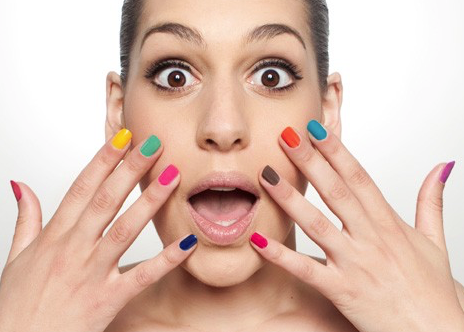
27 Jun How Do You Tell What Color Suits You
By: Natalia Moore
The first essential for a wardrobe with a coordinated color scheme is to choose a basic neutral. Beige or Brown if you’re a “brown” person, navy or grey if you’re a “blue” person. If you live in the city, you could choose black.
From there you make a combination of a few colors, including the favorites that will lift your wardrobe from the drab to the interesting.
Apart from the garments that stand on their own color feet, like suits and evening dresses, don’t have more than three colors in your scheme; the group of beige, green, and coral, for instance, or a group of blue, navy, and pink.
Two-toned shoes, or handbags, are often a good investment because they will match up to a second handbag, or shoes, and give you greater versatility for your money.
Example worth its weight in leather: a pair of shoes in black patent and tan calf; with them goes one handbag in black patent, another in tan. Second example: a bone-and-white handbag, to be worn with white or bone shoes. Match your hat and gloves to the color that appears only once; tan, in the first example, or a paler shade of golden brown.
The accessory neutrals for evening are gold or silver; you can wear these with almost anything.
Now for a summary of accessory “don’ts”:
- Don’t imagine, for one moment, that black (or white, for that matter) goes with everything. It doesn’t go with everything any more than beige or sky-blue pink. Choose your accessories to tone with colors as well as for any other reason. Never wear black accessories with light evening wear or florals.
- Don’t forget the advantage of a focal point in color: a lilac hat with an all grey outfit, a lime-green scarf with a navy suit, a floral print bag with a self colored evening dress, a white collar on a black suit.
- Don’t contrast accessories with your outfit unless they have approximately the same tonal values.
- Don’t wear startlingly bright gloves with a dark suit or dress.
- Don’t buy good, expensive accessories in high-fashion colors; the accessories will outlast the fashion for the color and you won’t be able to match them up with garments later.
- Don’t buy a bright accessory to go with a single outfit unless you have a bonus from your budget or are intending to liven up a second-best garment. A pair of turquoise shoes to go with a simple summer dress is folly; a pink-and-orange blouse to brighten last year’s brown suit is a good investment.
Skin tone is a better guide to your coloring than the color of eyes or hair. Obviously red-haired girls look good in green, but if they have that clear pink-and-white skin that goes with red hair they also look marvellous in pink. They can wear any color, in fact, in the red-to-yellow sector of the color circle.
Don’t be conservative about the colors you can wear. Admittedly it is better to wear a good deal of the color that makes you feel happy, but don’t miss out on a good color because of a fixation against it. A fabulous color that you think you can’t wear may make a dream come true if you dare to choose it for a special occasion dress.
If your skin is creamy, sallow, or olive, the autumn tones – browns, greens, reds, russets, and deep golds – will suit you.
If your skin is quite brown, choose lighter shades in the same color group and soft pale mixtures in prints, paisleys, and tweeds. Dark-skinned people should avoid dark, solid blocks of color; clear, light colors will lighten their skin tone.
If your skin is pale, or pink and white, you can probably wear the pinks, blues, and clear blue-green colors. To wear yellow, you need a very clear, golden sort of complexion, and citrus-yellow can be worn only if your skin is warm-toned, otherwise it will make you look sallow.
Most people, generally speaking, can wear black or white, but both colors are hard on aging skins, and there are some even youthful women who need the flattery of a softer color at the throat.
Remember that your skin tone, as well as the color of your hair, changes as you get older and you must vary the shades you wear accordingly.
When you’re feeling tired or depressed, whatever your age, don’t tax yourself by wearing a difficult color. This isn’t the moment to wear red; you may feel the color will cheer you up, but, in fact, all it will do is to make you realize how very depressing life is, and that to top it off you look absolutely awful in red.
Wear something soothing that will give you renewed courage and make you feel it is all worth while.
Finally, there is one never-to-be-broken rule: Never wear a color you don’t like.


No Comments